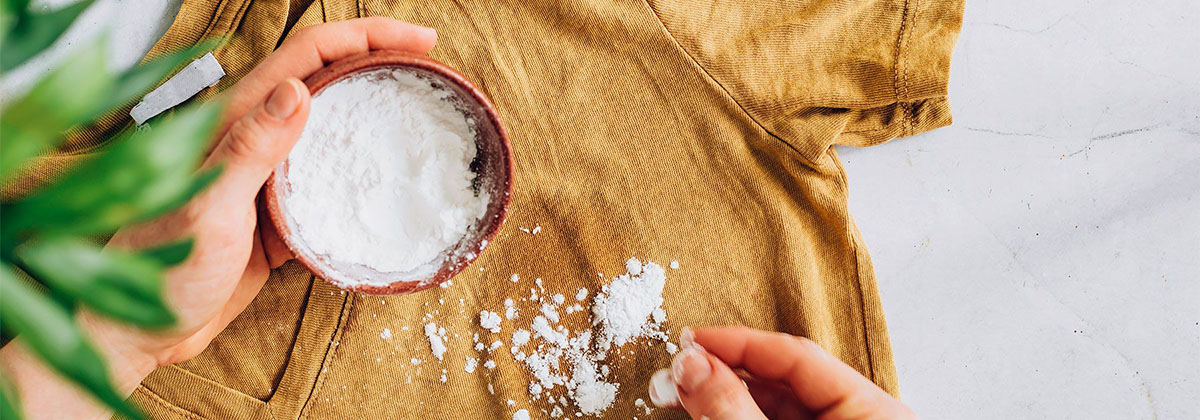05 Nov How to Remove Oil Stains from Clothes? (Part 1)
Stains on clothes are one of the most annoying things that can happen to your favourite garments. As you know, oil stains aren’t easily removed with water. If it isn’t done correctly, it’s possible to fix the stains and not clean them. In this article, we have introduced some simple and, at the same time, essential solutions for removing grease stains.
First method: Remove oil stains using baby powder
- Remove any remaining fat or oil from your clothes with a toilet paper towel. Before going to the next step, try to clean the oil from your clothes as much as possible.
- Gently cover the oil stain with baby powder. If you don’t have baby powder, you can do the same with salt or cornstarch.
- With toilet paper or a spoon, remove baby powder from the stain. Do this carefully and be careful not to spill the powder on other parts of your clothes.
- Pour a little dishwashing liquid and water on the stain and rub it with your finger. After the water and liquid have foamed, apply an old toothbrush to the stain in a circular motion. Wipe the stain from both the inside and outside of the garment.
- Wash clothes alone with washing powder or liquid. Follow the instructions for washing each garment written on the label. To dry clothes, expose them to open air. The use of dryers that dry clothes at high temperatures may cause any residual oil to seep into the clothes.
The second method: using dishwashing liquid, shampoo or soap
- Cover the oil stain with dishwashing liquid. It may be more effective to use detergents to remove grease, but it isn’t necessary to use them. The shampoo is designed to remove fat from the body to be helpful in these cases. Soaps are also effective in clearing fats. Just make sure it doesn’t contain additives that prevent cleaning. For more robust stains, you can use laundry soap. Moisten the soap with water (or with more ammonia). Then apply it to the stain so that the required amount of soap is transferred to the stain and create foam. You can also grate some soap and pour it on the stain after moisturizing. If you use coloured detergents, dilute them enough or make sure that the detergent used doesn’t change the colour of your clothes. For more robust stains, use an old toothbrush, as the toothbrush can remove stains better. Old brushes or small cleaning brushes are also good options for removing stains.
- Rub the foam from the soap, dishwashing liquid or shampoo on the stain. First, completely dissolve the detergent in water. Shampoo, soap and dishwashing liquid contain unique compounds that fight oil stains.
- First, wash the stain with water and then with vinegar. Vinegar is a natural cleanser and has many uses. Vinegar reduces the alkalinity of soaps and detergents and reduces their effectiveness. So don’t use detergents and vinegar at the same time. If you want to use vinegar and detergent to clean stains, mix vinegar and water in a ratio of one to two and pour it on the stain of clothes. Then wash the vinegar off your clothes and do the above steps with detergent, soap or shampoo.
- Wash clothes alone with washing powder or liquid. Follow the instructions for washing each garment that is written on the label. To dry clothes, expose them to air to dry.
- Repeat the above steps for more resistant stains.
The third method: using a lubricant liquid or spray WD-40
- Instead of using detergents, use WD-40 spray or other lubricants on your clothes. WD-40 Spray and other lubricants are good tools for removing grease from surfaces. First, try a WD-40 spray or lubricant on a small area of your clothing that isn’t visible to make sure the colour of your clothing doesn’t change.
- Leave the WD-40 spray or lubricant on your clothes for 20 minutes.
- Put your clothes in a container of warm water and remove WD-40 spray or lubricants.
- Wash clothes alone with washing powder or liquid. Follow the instructions for washing each garment written on the label. To dry clothes, expose them to air.




Sorry, the comment form is closed at this time.